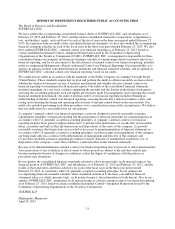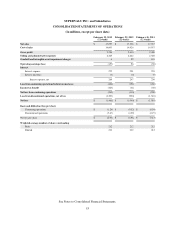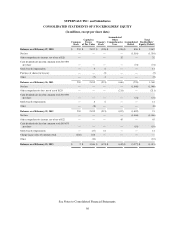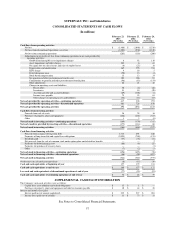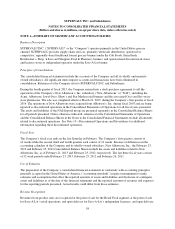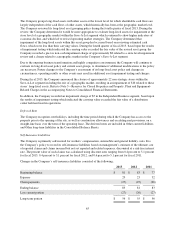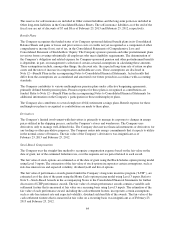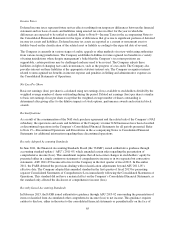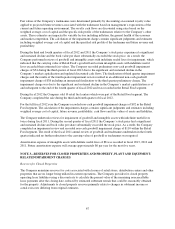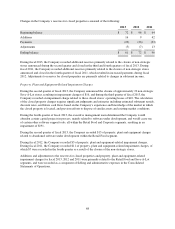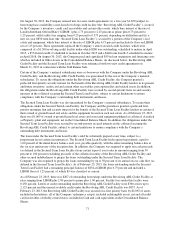Albertsons 2013 Annual Report Download - page 63
Download and view the complete annual report
Please find page 63 of the 2013 Albertsons annual report below. You can navigate through the pages in the report by either clicking on the pages listed below, or by using the keyword search tool below to find specific information within the annual report.Reserves for Closed Properties
The Company maintains reserves for costs associated with closures of retail stores, distribution centers and other
properties that are no longer being utilized in current operations. The Company provides for closed property
lease liabilities based on the present value of the remaining noncancellable lease payments after the closing date,
reduced by estimated subtenant rentals that could be reasonably obtained for the property. The closed property
lease liabilities usually are paid over the remaining lease terms, which generally range from one to 20 years.
Adjustments to closed property reserves primarily relate to changes in subtenant income or actual exit costs
differing from original estimates. Adjustments are made for changes in estimates in the period in which the
changes become known.
Planned Business Dispositions
The Company reviews the presentation of planned business dispositions in the Consolidated Financial Statements
based on the available information and events that have occurred.
The review consists of evaluating whether the business meets the definition as a component for which the
operations and cash flows are clearly distinguishable from the other components of the business, and whether it is
anticipated that after the disposal the cash flows of the component would be eliminated from continuing
operations and whether any significant continuing involvement would remain. In addition, the Company
evaluates whether the business has met the criteria to be classified as a business held for sale. In order for a
planned disposition to be classified as a business held for sale, the established criteria must be met as of the
reporting date including an active program to market the business and the disposition of the business within one
year.
Planned business dispositions are presented as discontinued operations when all the criteria described above are
met. Operations of the business components meeting the discontinued operations requirements are presented as a
separate line on the Consolidated Statements of Operations. Prior to disposition, the assets and liabilities of the
business component planned to be disposed of are presented as separate lines within the Consolidated Balance
Sheets.
Businesses held for sale are reviewed for recoverability of the carrying value of the business upon meeting the
classification requirements. Evaluating the recoverability of the assets of a business classified as held for sale
follows a defined order in which property and intangible assets subject to amortization are considered only after
the recoverability of goodwill, indefinite lived intangible assets and other assets are assessed. After the valuation
process is completed the held for sale business is reported at the lower of its carrying value or fair value less cost
to sell and no additional depreciation or amortization expense is recognized. The carrying value of a held for sale
business includes the portion of the accumulated other comprehensive loss associated with pension obligations of
the operations of the business.
The anticipated loss on disposition of New Albertsons of $1,150 was recognized as of February 23, 2013 and is
presented as a component of Current liabilities of discontinued operations in the Consolidated Balance Sheets.
There are inherent judgments and estimates used in determining impairment charges. The sale of a business can
result in the recognition of a gain or loss that differs from that anticipated prior to closing.
Property, Plant and Equipment, Net
Property, plant and equipment are carried at cost. Depreciation is based on the estimated useful lives of the assets
using the straight-line method. Estimated useful lives generally are 10 to 40 years for buildings and major
improvements, three to 10 years for equipment, and the shorter of the term of the lease or expected life for
leasehold improvements and capitalized lease assets. Interest on property under construction of $4, $6 and $8
was capitalized in fiscal 2013, 2012 and 2011, respectively.
61


